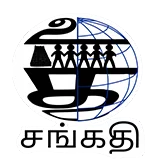
by Saman Indrajith
Leader of the 43 Brigade and independent MP Patali Champika Ranawaka has called for legal action against politicians and officials responsible for the country’s bankruptcy.Speaking at a meeting with the Executive Committee members of the Sri Lanka Parliamentary Journalists’ Association, at the Solis Banquet Hall, in Pitakotte, last week, Ranawaka said that legal action could be instituted under the provisions of the Monetary Law Act of 1950 against those who bankrupted the country.
“In addition, there are provisions in the Fiscal Responsibility Management Act that could hold filing cases against the secretaries to the Ministry of Finance and Treasury Secretaries who had violated these laws and failed to execute their responsibilities. There are laws that put limits in obtaining loans. These officials cannot place the blame only on the politicians. They too should be brought before the law. They did the very same as Sakviti Ranasinghe who asked the people to deposit money, promising 25 percent interest. Sakviti could not pay and declared bankruptcy. He was put in jail for 22 years but those who ruined the national economy have not been punished yet. What our Central Bank and the governments had been doing was very similar to the conduct of Sakvithi.
“We took loans. We invested some in development and lost the rest due to waste and corruption,” Ranawaka said, noting that Sri Lanka had been obtaining loans since 1954. “There is nothing wrong with taking loans as long as they can be settled. We used to obtain loans on very low interests from other countries and international bodies such as JICA, KOICA and World Bank. After Sri Lanka was declared a middle income earning country, we could not obtain loans for such low interests. Thereafter we had to go to the market to obtain loans for higher interests such as 8-10 percent to settle in five to 10 years. We obtained them in the form of International sovereign bonds (ISBs) and Sri Lanka Development Bonds (SLDBs). The ISBs and SLDBs were around four percent of GDP. Interest for the loans taken from the World Bank and Asian Development Bank was around 0.1 to 0.2 percent. For example, the LRT project from the JICA loan was less than 0.1 percent. It had a grace period of 12 years and further 40 years to settle completely. Instead of such loans, we opted for commercial loans which doubled in 10 years if we do not pay. What we are facing today is a crisis because of commercial loans.”
Ranawaka said that the Gotabaya Rajapaksa government had made a large number of blunders, which had ruined the economy. “He gave massive tax reliefs. He wanted to remove the Super-gain tax introduced by the Yahapalana government. It was a 25 percent tax imposed on 62 leading companies, including those of Dhammika Perera, who earned more than one billion rupees in profits. That tax brought in 56 billion rupees to government coffers. These businessmen opposed the tax and promised that they could use that 56 billion rupees for more projects that could generate around Rs 250 billions, following liberal economic policies. The Rakapaksas, who came to power promising to promote socialist economic policies, removed that tax. They brought down VAT and removed limits of income tax by upping the threshold to three million rupees. The result was a drop of those who paid income taxes from 1.5 million to 400,000. Their tax revisions resulted in a drop of around 40 percent of national income. The rating institutes, including the Moody’s, Fitch Ratings, the S&P, dropped us from B grade to C grade. That was one of the main reasons for our inability to obtain loans.
“It is true that the Yahapalana government obtained 12 billion US dollar loans. The then Governor of the Central Bank, Indrajit Coomaraswamy, went to the international market, when the interests were very low, and obtained loans to raise around eight billion US Dollars. Of that amount, we left UDS 7.2 billion as reserves. This government spent USD 5.5 billion during the corona pandemic period to keep the rupee value against dollars. That attempt was not successful because in the open market a dollar was around Rs 330-380. They not only failed to achieve the desired results but also lost the reserves, too. Corresponding to these, remittances from foreign countries dropped from USD 600 million a month to USD 250 million as Lankan expats opted to Undiyal. In the meantime, the government kept on spending on highways, carpeting 100,000 roads, building 13,000 houses and developing 100 towns. To cover up the loss, they printed more money. Total the value of the rupees in circulation was only 1,500 billion. Now, after the cash printing spree, we have 4,500 billion rupees in circulation. That is the main reason for the increasing prices of goods and inflation.”

